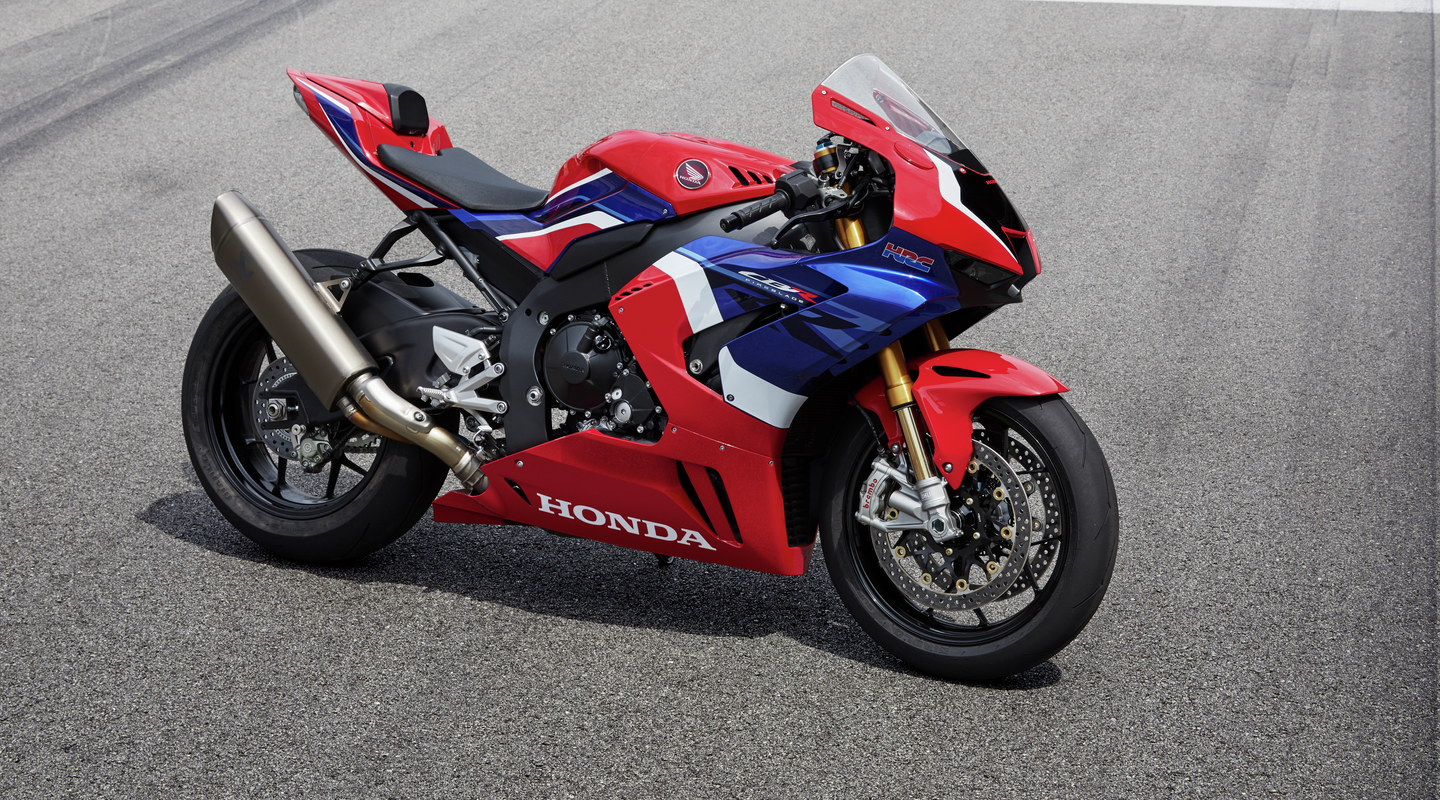RC213V-Spec bore and stroke
The SP Fireblade’s bore and stroke (81mm x 48.5mm) are the same as Honda’s MotoGP Championship RC213V racebike, drawing on our experience with cylinder filling and combustion gathered on the track.
Semi-cam gear train
The CBR1000RR-R Fireblade SP cam drive uses a shorter chain than previous designs. A gear on the crank drives an intermediary gear/sprocket, which in turn drives the cam chain, thus shortening the overall chain run.
Forged aluminium pistons
You need a light piston to make high revs. To that end, the CBR1000RR-R Fireblade SP features pistons forged out of A2618 aluminium, the same material used in the RC213V. Each piston is now lighter by approximately 5% compared to a CBR1000RR piston, even though the bore is bigger.
Larger throttle body
The CBR1000RR-R Fireblade SP’s throttle bore diameter has been enlarged from 48mm to 52mm. The oval cross-section inside the throttle body streamlines airflow all the way from the throttle butterfly to the twin intake valves in the head to reduce intake air pressure drop.
Narrower intake-side valve angle
The intake valve angle is a super-narrow nine degrees (two degrees narrower than on the CBR1000RR). This change improves ventilation efficiency inside the intake port by approximately two percent, contributing to higher power output.
Direct starter layout
Normally a motorcycle engine is started up by rotating the crankshaft, however, for the CBR1000RR-R Fireblade SP, the starter acts on the clutch main shaft. In addition to shortening the crankshaft, double use of the primary driven gear to transmit rotation from the starter motor makes an even more compact layout possible.
Built-in bottom bypass cooling
Honda’s unique built-in bottom bypass cooling system sends cooling water differently around the top and the bottom of the cylinder. The top needs more cooling, while the bottom needs less. The technology eliminates the existing hose outside the cylinder block. Cooling water coming out from the radiator flows into areas needing to be cooled more. As a result, the difference in temperature at different locations on cylinder bores becomes smaller, so that bores are less distorted, reducing friction.
Finger-follower rocker arms
The CBR1000RR-R Fireblade SP uses finger-follower rocker arms. The design reduces the inertia weight of the valve system by approximately 75% compared to a shim-and-bucket system and contributes to the Fireblade SP’s higher redline. DLC (diamond-like carbon) coating reduces friction resistance on surfaces sliding against the cam and tappet shim.










